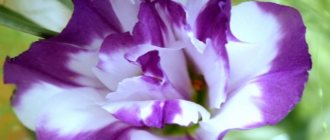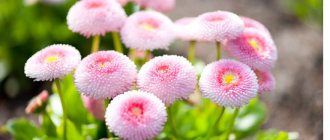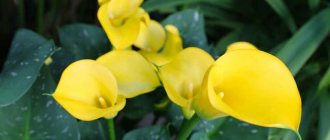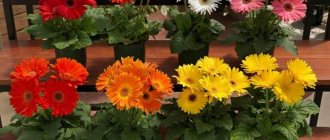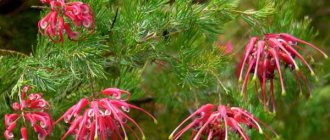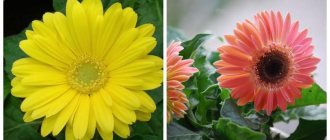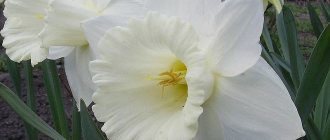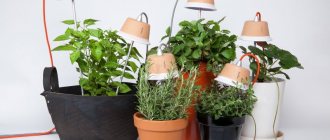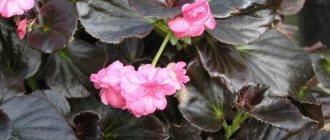If you have at least one gerbera growing, most likely you have already tried to propagate the flower. "Transvaal chamomile" develops equally well from a cutting, a leaf or by dividing a bush. But the best results at home are obtained by growing gerbera from seeds. Practice shows that this method produces the maximum number of new bushes that are resistant to fungal infections, characterized by powerful growth and rapid development.
What do gerbera flowers look like?
- Gerbera is very similar to chamomile. But unlike the white petals of chamomile, gerbera has a different color
- There are white, scarlet, pink, yellow and other gerberas. Almost all varieties are distinguished by bright colors
- Gerbera belongs to the Aster family, so there are similarities with lush asters
- Low-growing varieties are ideal for growing indoors. However, it is worth noting that the height of the gerbera stem can reach 60 cm
- The diameter of the flowers ranges from 4 to 12 cm
Gerbera indoors
Description
Gerberas are herbaceous plants that have strong, bright green stems and large, colorful flowers. They can be of different shades: yellow, red, pink, and white gerberas look beautiful. The exception is blue flowers: there are no such gerberas in nature. The plant is grown both in the garden at the dacha and at home in pots. Gerberas are heat-loving, and this is their main feature. Otherwise they are not too demanding. However, there are still rules for planting indoors and outdoors that you should follow in order to grow beautiful indoor or garden flowers.
Are gerberas perennial or annual?
Important: In open ground, gerberas are grown in greenhouses. Constant changes in climatic conditions are not acceptable for this plant. Indoor gerberas live much longer.
Gerbera can be an annual or perennial plant. If we are talking about open ground, then gerberas can please the eye only for one year - in the summer. In winter, the roots must be dug up and placed in a basement with a suitable temperature. In this case, there should be an earthen lump on the roots. This is the only way the roots can survive.
Indoor gerbera is a perennial plant. The plant will live a long time if you take proper care
Reproduction
Gerbera is propagated by seeds or by dividing the bush.
During division of the bush, the young seedling will fully retain the characteristics of the mother plant. But if propagated by seeds, this may not happen. The mother gerbera can be divided in the spring. The bush should be 3-4 years old. We care for young seedlings in the same way as for adult gerberas. Flowers will appear on new plants within a year. Seeds are also sown in the soil in the spring. After two or three leaves appear on the sprouts, pruning (thinning of the seedlings) is carried out. When the 5th leaf appears, you can plant the seedlings in individual pots. The first feeding will be needed in a month. You need to remove faded flowers from gerberas in a timely manner, completely breaking them out of the nest. Then they will not rot and the growth of new flowers will not be inhibited. You need to remember that even if you provide your purchased indoor gerbera with close attention and competent care, it will usually die anyway. This is due to the fact that in greenhouses, growers stuff flowers with growth stimulants so much that without them the plants simply cannot survive. Therefore, purchase gerberas in the markets from amateurs or sellers who have already won your trust.
Gerbera: the meaning of the flower, what it symbolizes, signs
Important: It is generally accepted that every flower means something. For example, carnations are traditionally considered a mourning flower; roses mean love.
Gerbera has a positive meaning:
- Represents joy and lightness
- If a man gives a woman gerberas, we can assume that he is interested in her
- Another meaning of the flower is flirtation, mystery
There are several versions of the origin of the flower:
- The genus was named after the German botanist and physician Traugott Gerber. Traugott Gerber was a researcher of the flora of the Volga region, and also served as director of the botanical garden in Moscow
- The second version of the name comes from the Latin word “herba”, which means grass
- In some English-language sources, gerbera is called “Transvaal daisy”
Varieties of gerbera
If you want to give a gerbera in a pot to your relatives, friends, but at the same time you believe in omens, do not doubt it. Because gerbera represents the best qualities.
Gerberas in a pot: how to care, what kind of soil is needed, how often to water?
Experienced gardeners do not see any difficulties in growing indoor gerberas. But if you are new to floriculture, you should know some care tricks.
Watering
- Excessive watering is inappropriate. If water stagnates in the pot, fungal diseases of the plant can develop. Also, excessive watering can lead to yellowing of the leaves.
- Poor watering, in turn, leads to a state of dormancy. Gerbera will stop blooming
- Water the flower along the edge of the pot, as gerberas are prone to fungal diseases
Important: The secret to watering gerberas is to use warm, settled water. The water can be at room temperature, but in no case is it cold. If you water a gerbera with cold water, there will be a difference in air and water temperature, as a result of which the plant will begin to rot.
Care for gerbera at home
Lighting
- A lot of light and not direct sunlight is a prerequisite for the growth and flowering of gerbera
- In the summer, it is advisable to place the flower on the balcony or loggia so that there is access to fresh air.
- In the winter season, when there is very little light, it is advisable to support the gerbera with fluorescent lamps
- The normal temperature for gerberas is 24°
The soil
- The following soil mixture is used: leaf soil with the addition of peat, sphagnum or purified sand
- It is unacceptable to add compost or humus to the mixture.
- Choose magnesium sulfate as a fertilizer; at low temperatures you can fertilize with phosphorus
- Fertilizer concentration should be weak
- There is no need to fertilize gerberas in winter.
Planting material
The seeds of the plant have an elongated shape with a small brush at the tip, small in size. One gram contains 300-500 pcs.
Gerbera is not a self-pollinating plant , therefore, in order to obtain seeds from a flower, it is necessary to carry out cross-pollination, artificial pollination at the time of flowering. Pollen ripens faster and is stored for 100 days.
It is worth remembering that in order to preserve the variety, both the male and female plants must be of the same species, otherwise you may end up with a plant with completely different characteristics. The result is unpredictable; the resulting seeds can produce a completely different plant in terms of characteristics.
Gerbera pot: which one to choose?
We should also talk about a pot for growing gerbera. It is known that it is undesirable to use pots after other plants, as they may contain disease spores. Therefore, you need to replant the gerbera into a new pot.
The pot must meet the following requirements:
- Must be free
- It is necessary to have a tray that will not come into contact with the pot (pallet on a stand)
Important: Although the plant does not like overwatering, a certain humidity must be maintained constantly. The right pot helps in this matter. Place pebbles on a tray and pour water over them. If the tray is not in contact with the pot, the roots will not absorb the water, but it will still be a moist environment.
Main problems when growing
Why do the leaves turn yellow?
With Alternaria blight, brownish spots are visible on the foliage.
Then the leaves begin to turn pale and turn yellow.
Also, with mosaic, yellowish-green spots appear, and then leaf necrosis develops.
It is best to treat gerbera with Radomil Gold.
This video once again shows how to properly care for indoor gerberas:
How to achieve lush flowering
Despite its love for bright sun, the plant stops blooming if there is too much light. Gerbera needs no more than 12 hours of daylight. It blooms most luxuriantly from late August to November.
If a gerbera does not bloom for more than 3 months, this means that the reason is not the light, but something else. A plant may stop forming buds if it is planted in a pot that is too large for it, then the crop directs all its energy to the growth of rhizomes. If you put nitrogen under the gerbera, it will also stop flowering.
Why do indoor gerbera leaves turn yellow and dry: what to do?
Gerbera leaves turn yellow and dry if they are attacked by pests :
- Whitefly . The plant should be treated with a preparation containing permethrin.
- Spider mite . To get rid of it, spray the leaves 2-3 times a day with clean water. If this does not help, you need to use the drug Actellik
Important: Yellowing occurs when overwatering. Reduce watering if your gerbera begins to wilt and turn yellow.
Insect pests
Of the pests of indoor plants, gerbera plants are most often parasitized by aphids, spider mites, scale insects and whiteflies.
Aphid
Aphids gather on the leaves of the plant in large colonies.
Recommended by topic
Garden Camellia Spathiphyllum
The plant is usually attacked by a large number of small beige or green insects. By sucking juice from leaves and stems, midges lead to deformation and drying out of affected areas. To prevent their appearance and reproduction, the bush is sprayed with herbal infusions with a pungent odor (for example, celandine, marigold or wormwood).
The affected plant is also sprayed with herbal infusions, but more often - not once a week, but every 7 hours. If these remedies do not work, treat the bush with some insecticide, for example Admiral.
Spider mite
This insect multiplies quickly in dry indoor air, and its activity increases in hot weather. Spider mites are so small that they are difficult to see without a magnifying glass. Insect damage to a plant is indicated by the appearance of small yellow dots and transparent cobwebs on the leaves. The leaves begin to dry out and fall off. To prevent the appearance of the pest, the bushes are sprayed with an infusion of garlic or onion, and a switched-on quartz lamp is directed at the plant once a week.
Gerbera leaf affected by spider mites.
If a gerbera is damaged by spider mites, treat the bush with Fitoverm. Repeated spraying is carried out after a week.
Shchitovka
The pest has a round shape and light or dark brown color. At first it looks like plant growths on stems or leaves, their volume soon becomes larger, and the surrounding surface acquires a red-yellow hue. When scale insects multiply significantly, the soil under the flower turns black. To prevent damage, gerbera is treated with an infusion of crushed hot pepper or a 20% aqueous solution of alcohol.
To destroy scale insects, apply machine oil to them, after 3 hours wipe the surface of the leaves with a solution of laundry soap, and spray with the Actellik insecticide.
Whitefly
A small white butterfly that looks a bit like a moth. It feeds on the juice of leaves, as a result of which they turn yellow and become somewhat transparent. For preventive purposes, it is recommended to periodically loosen the soil surface and lay out traps in the form of cardboard, on the top side of which a layer of Vaseline is applied. Whiteflies are also affected by turning on the fumigator.
To destroy the pest, the gerbera is sprayed with an infusion of tobacco or wormwood; if folk remedies have no effect, the soil and bush are treated with Actellik.
Question to the expert
My gerbera is 2 years old. Recently I noticed a deterioration in the condition of the plant; it stopped growing, did not bloom, and the leaves became faded. I decided to replant it in fresh soil and noticed small round worms among the roots. Is the flower's malaise related to their appearance? How to deal with them?
These are nematodes, they cause serious harm to the plant, and it is quite difficult to get rid of them. It is necessary to completely replace the nutrient substrate and disinfect the pot (for example, you can scald it with boiling water). The bush and its root system must be sprayed with a fungicide, such as Phosfamide. The drug Dekaris gives an excellent effect (a tablet crushed into powder should be dissolved in 1 liter of water). The plant is treated with it 4 times with a break of 1 week. For prevention, you can periodically use an infusion of marigold flowers when watering.
Gerberas: growing in open ground in the garden, at the dacha
Growing gerberas in open ground is not an easy task. These are annual plants, so they will have to be sown every year. And seed germination will depend on weather conditions. As you know, gerbera needs light and warmth.
When cold weather sets in, you can dig up the roots of the gerberas and try to save them until next year. This is what they do with dahlias, for example. However, gerbera roots need to be stored in a dry place with a ball of earth; they need to be covered with straw and a layer of dry leaves. The temperature at the storage location should be about 8º.
Important: In Africa, gerberas grow on their own, but the climate of Russia and many other countries does not allow gerberas to grow without problems.
Growing in open ground
Transfer
Aesthete flower growers use this method. They often use gerberas to design beautiful flowerbed arrangements. To speed up their work, it’s easier for them not to wait for the seeds to germinate or the cuttings to grow, but to plant gerberas grown in containers and ready to bloom in their flowerbeds.
This method is called transshipment, when the root system of the plant remains unharmed, but the planting soil is renewed.
It is recommended to plant gerberas in this way in late May - early June. Before flowering, transplanted gerberas have time to take root well and get used to outdoor conditions.
Flowerbed plants often undergo transshipment twice a year - during planting and during wintering. Preserving the root system allows you to grow large gerbera bushes, which after a few years are suitable for division.
Whatever method of propagation of gerbera is chosen, for a successful result of the work done, it is necessary to take into account the needs of the plant throughout the entire growing season.

